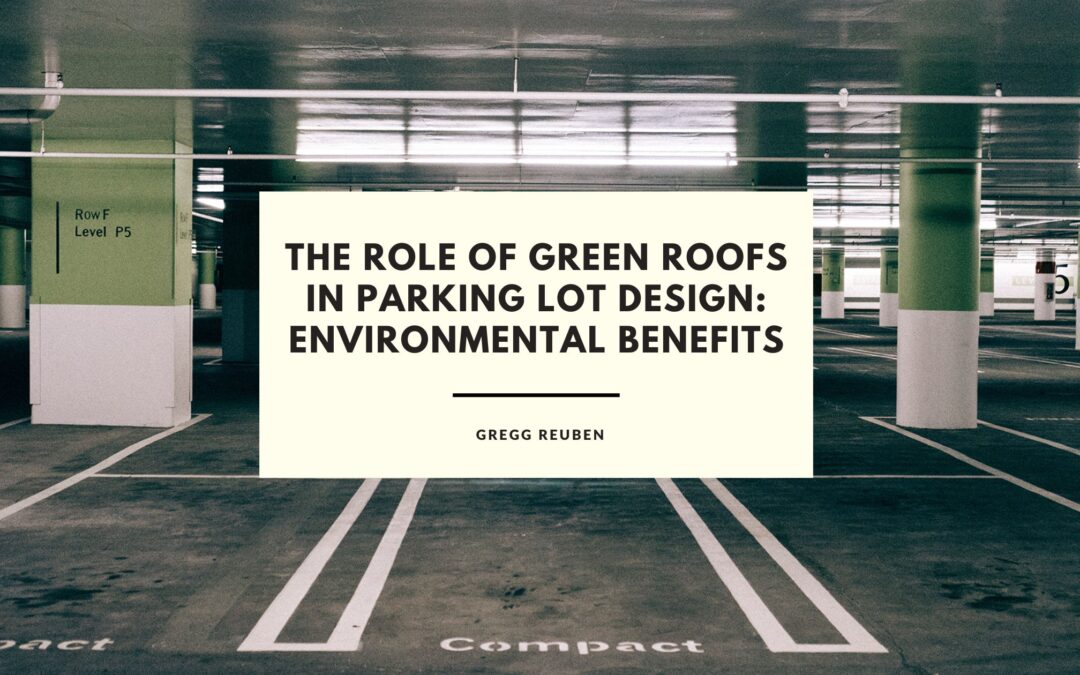As urban landscapes expand and concrete jungles multiply sustainable, eco-friendly design solutions are imperative. Among these, green roofs are a transformative addition, particularly in parking lot design. These verdant rooftops offer multifaceted environmental benefits, pivotal in fostering sustainability and ecological balance within urban spaces.
Aesthetic and Environmental Harmony
Green roofs seamlessly integrate nature into the urban fabric. Imagine a parking lot adorned with a lush canopy of vegetation, offering a serene and inviting landscape that contrasts starkly with traditional concrete expanses. This visual transformation enhances the overall aesthetics and contributes significantly to environmental preservation.
Mitigating the Urban Heat Island Effect
One of the prominent advantages of green roofs is how they combat the urban heat island effect. Traditional roofs absorb and retain heat, elevating temperatures in urban areas. In contrast, green roofs act as natural insulators, reducing the heat buildings absorb and mitigating temperature fluctuations. In parking lots, this translates to cooler cars and a more comfortable pedestrian environment.
Stormwater Management and Water Conservation
The environmental benefits extend further, with green roofs serving as effective stormwater management systems. They absorb rainwater, reducing runoff and alleviating pressure on municipal drainage systems. This feature minimizes flooding risks, improves water quality, and fosters groundwater recharge in parking lot design. Moreover, green roofs facilitate water conservation by retaining moisture, reducing the need for additional irrigation.
Air Quality Enhancement and Biodiversity Support
The vegetation on green roofs acts as a natural air filter, trapping pollutants and improving air quality. This becomes crucial in urban settings with high vehicular traffic, like parking lots, where emissions can significantly impact air purity. Additionally, these green spaces create habitats for insects, birds, and small animals, fostering biodiversity within city limits.
Energy Efficiency and Economic Benefits
Implementing green roofs contributes to energy efficiency by reducing the need for air conditioning in buildings. These roofs minimize indoor temperature fluctuations by providing insulation, resulting in decreased energy consumption. While initial installation costs might be higher, the long-term savings on energy bills and extended roof lifespan make green roofs a cost-effective investment.
Community and Well-being
Beyond environmental advantages, green roofs enhance community well-being. They create communal spaces for relaxation, social interaction, and recreational activities. In parking lots, these areas offer a retreat from the concrete jungle, promoting mental health and providing a connection to nature in the city.
Integrating green roofs in parking lot design symbolizes a harmonious blend of urban infrastructure and environmental consciousness. Beyond their aesthetic appeal, these roofs offer many ecological benefits, from mitigating the urban heat island effect and managing stormwater to enhancing air quality and promoting biodiversity. Their multifaceted advantages extend to energy efficiency, economic savings, and fostering community well-being. As cities evolve, embracing green roofs in parking lot design is pivotal for a sustainable and resilient urban future.
Green roofs transform the landscape and serve as a beacon of hope for a greener, more sustainable tomorrow by harnessing the potential of nature’s canopy.
